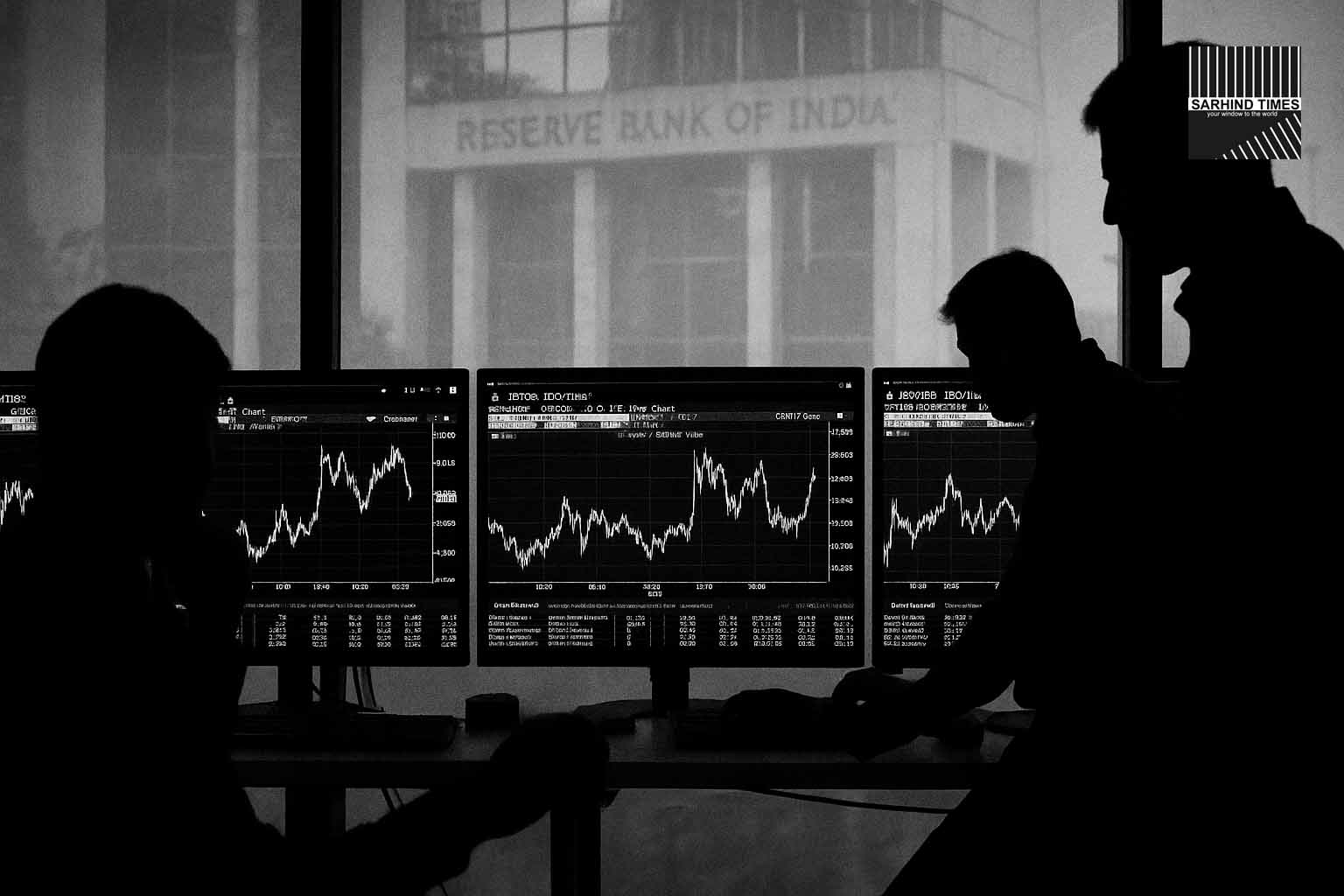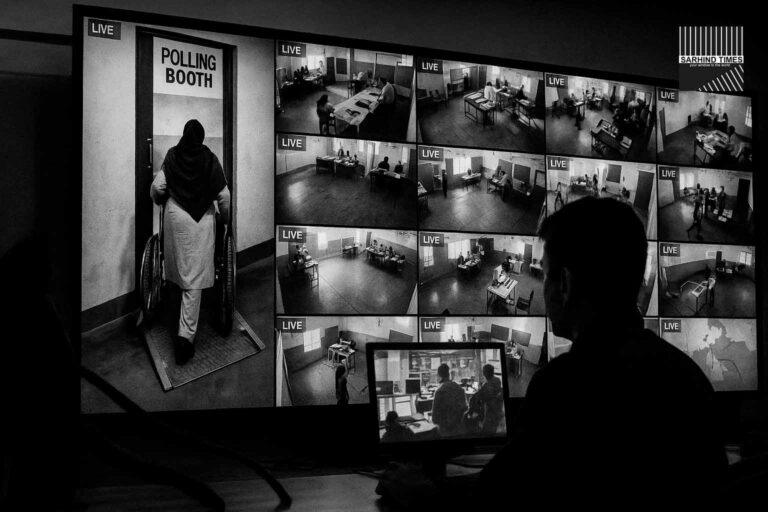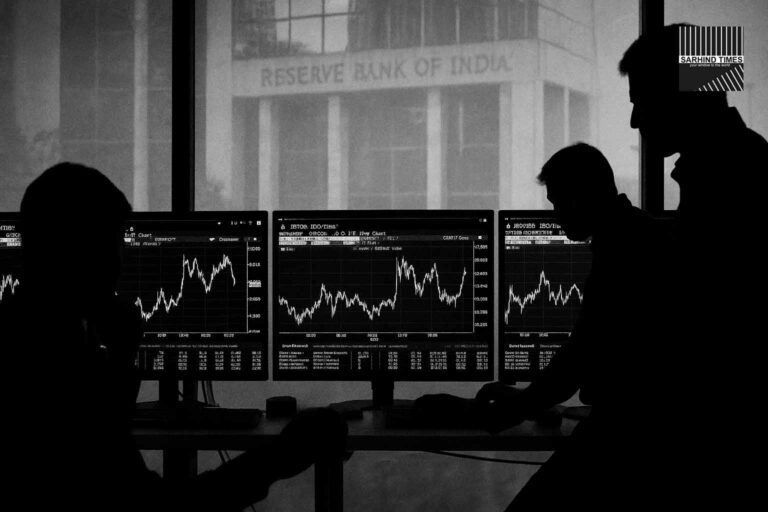Aggressive early-morning dollar sales by state-run banks push USD/INR off near-record highs; sentiment reset echoes February’s stabilization playbook
Mumbai, October 17, 2025 — In a display of determined currency management, the Reserve Bank of India (RBI) waded into the foreign exchange market early Friday, deploying heavy dollar sales through state-owned banks to halt the rupee’s slide toward record lows. The intervention, traders said, began before regular market hours, signaling the central bank’s intent to preempt panic and flush out speculative long-dollar positions that had accumulated over the past week.
By mid-session, the USD/INR pair retreated from an 88.26 open to around 87.75, reversing nearly half of its early depreciation and stabilizing amid improved liquidity. Dealers described the move as “forceful and surgical,” drawing parallels with the February 2025 operation that similarly checked volatility after oil-import payment spikes.
While fundamental flows—corporate inflows, FPI activity—were modest, the signaling effect proved decisive: markets were reminded that the RBI remains ready to curb disorderly movements and preserve macroeconomic stability.
I. The Flashpoint
The rupee had been under steady depreciation pressure in recent weeks amid a global risk-off mood, firm U.S. Treasury yields, and persistent oil strength above $90 a barrel.
Thursday’s late trades saw speculative dollar buying, with algorithmic and offshore accounts extending long positions overnight.
By 8:40 a.m. Friday, dealers reported sizeable offers from two major state-run banks—typically acting on behalf of the central bank—dumping dollars into the thin pre-market window.
The reaction was immediate: spot prices retraced, forward premiums narrowed, and stop-loss orders from leveraged traders cascaded, amplifying the reversal.
“It was a textbook RBI move — front-run the panic, flush out the excess, and re-anchor psychology,” said a senior dealer at a multinational bank. “They didn’t wait for the fire; they doused the smoke.”
II. The Numbers Behind the Move
- Intraday Range: 88.26 → 87.75
- Onshore Turnover: Estimated $8.7 billion
- Implied Volatility: Fell from 6.2% to 5.6% post-intervention
- Forward Premiums: 1-year dropped 10 bps to 1.58%
- Sensex/Nifty Reaction: Mild positive bias as importers covered hedges
Traders said the RBI’s dollar supply was timed to coincide with offshore derivative (NDF) market settlements in Singapore and Dubai—often a key influence on early rupee momentum.
Once volatility subsided, smaller private banks and corporate desks followed suit, selling dollars to lock profits, deepening the reversal.
III. Déjà Vu: February’s Playbook Revisited
This isn’t the first time the RBI has executed what traders term a “shock-and-awe” intervention. In February 2025, when USD/INR threatened to breach 86.90, the central bank staged an early-morning sell spree through three state lenders, stabilizing markets within hours.
That operation also led to a two-week consolidation phase as importers and speculators recalibrated positions. The current intervention, say analysts, borrows directly from that template—swift, decisive, and psychological.
“The RBI understands that sentiment control is half the battle,” said Aditi Nayar, Chief Economist at ICRA. “It’s not about defending a magic number, but signaling discipline against disorderly moves.”
IV. The Macro Backdrop
Several macro factors have weighed on the rupee over the last month:
- Oil Imports: Elevated crude prices widened India’s current account stress. Each $10/bbl increase adds roughly $15 billion annually to import bills.
- U.S. Yields: The 10-year Treasury yield hovering near 4.8% has spurred outflows from emerging markets.
- Dollar Strength: The DXY index remains above 106, its highest since March.
- Domestic Equity Outflows: FPIs sold ₹9,400 crore in the first half of October.
- Seasonal Import Payments: Pre-festival bulk settlements by refiners and corporates temporarily spiked demand for dollars.
In such a setup, a self-reinforcing cycle of depreciation → fear → more depreciation can easily take hold unless the central bank intervenes.
V. Anatomy of the Intervention
1. Agents and Execution
State-run banks—primarily SBI, BoB, and PNB—were seen offering sizable dollar blocks in interbank trades. Dealers confirm RBI dealers monitored live quotes, occasionally guiding volume thresholds.
2. Timing
Unusually, selling began in the pre-market electronic window, before the formal 9:00 a.m. open, allowing the RBI to reset sentiment before full liquidity.
3. Instruments Used
Apart from spot dollar sales, the RBI also engaged in sell/buy swaps, simultaneously selling near-term dollars and buying forward to neutralize rupee liquidity. This prevents the intervention from flooding banks with rupees—helping avoid short-term inflationary effects.
4. Psychological Calibration
The move was as much about perception as price. “If traders believe the RBI will act, they stop testing the limits,” said a currency strategist at Nomura.
VI. Market Impact: Beyond the Charts
A. Speculative Flush-Out
Algorithmic and leveraged funds holding long-dollar positions were forced to unwind, triggering a wave of stop-loss sales. Open interest in USD/INR futures dropped by 6% intraday, the sharpest decline in two months.
B. Corporate Hedging Relief
Importers took advantage of the dip to cover near-term exposures, while exporters paused sales anticipating stability. This balanced market flows in subsequent sessions.
C. Inflation Shield
A stabilized rupee curbs imported inflation—critical as consumer prices recently edged to 4.9%, near the RBI’s comfort ceiling. The move indirectly helps anchor expectations, especially for items like fuel and edible oils.
D. Bond Market Comfort
Bond yields softened marginally, with the 10-year benchmark easing 3 bps to 7.12%. A steadier rupee often reduces foreign investors’ currency-hedging costs, aiding bond inflows.
VII. RBI’s Broader Currency Doctrine
The RBI’s stated stance remains clear: it does not target a specific exchange rate, but will act to prevent “excess volatility and speculative distortion.”
Governor Shaktikanta Das, in the last Monetary Policy press conference, reaffirmed:
“Our approach to forex management is pragmatic and dynamic. We build buffers in good times so we can deploy them when needed.”
India’s foreign-exchange reserves currently stand at $641.2 billion, providing ample ammunition for targeted interventions.
Analysts estimate that Friday’s dollar sales may have cost $2–3 billion—a fraction of reserves, but large enough to jolt speculators.
VIII. Comparing with Global Peers
Many emerging-market central banks are grappling with similar pressures:
- Bank Indonesia and Bank of Korea intervened repeatedly this month.
- Philippines’ BSP sold dollars and raised rates preemptively.
- Brazil’s BCB relies more on derivatives to stabilize the real.
In contrast, India’s RBI prefers direct market operations, citing its deep domestic banking network and forward cover flexibility as advantages.
IX. The Sentiment Effect
Markets thrive on perception. Even when fundamentals remain unchanged, confidence shifts can move billions.
Currency strategist Rahul Bajoria (Barclays) remarked:
“RBI’s move reasserts policy credibility. Traders no longer see a one-way bet against the rupee.”
This recalibration matters: when offshore speculators perceive a “line in the sand,” volatility compresses, giving corporates and investors time to recalibrate exposure.
X. What It Means for Businesses
- Importers: Benefit from reduced volatility; hedging costs decline.
- Exporters: Prefer gradual, not abrupt, rupee moves to manage receivables.
- Corporate Borrowers: External Commercial Borrowing (ECB) hedging costs fall as currency forwards stabilize.
- Retail Investors: A stronger rupee tempers gold and electronics prices during the festive season.
XI. Risks That Remain
- Crude Oil Wildcard: If Brent sustains above $95/bbl, import bills could offset intervention benefits.
- U.S. Fed Policy Path: Any hawkish surprise could reignite dollar demand globally.
- Portfolio Flows: October’s equity sell-offs need reversal for lasting support.
- Election Uncertainty: With major state polls due, fiscal spending could stoke liquidity and pressure the rupee indirectly.
XII. Analysts’ Outlook
Most analysts now expect USD/INR to trade in the 87.50–88.25 range near term.
ICICI Securities predicts a gradual return toward 87.00 if oil cools.
HSBC’s FX desk maintains a “neutral bias,” citing stable reserves and controlled inflation.
Brokerage consensus: the RBI has reclaimed the driver’s seat in FX sentiment.
XIII. Policy Takeaways
- Preemptive Action Works: Early interventions prevent spirals.
- Liquidity-Neutral Operations Protect Price Stability.
- Transparency Enhances Credibility: Consistent communication anchors markets.
Economist Neelkanth Mishra (Axis Bank) summarized:
“A predictable RBI is the best stabilizer in unpredictable times.”
XIV. The Global Backdrop: Dollar’s Dominance Questioned
The intervention comes as several Asian peers explore local-currency settlements and currency swap lines to reduce dollar dependence. India’s recent bilateral rupee trade pacts with UAE, Indonesia, and Bangladesh could gradually insulate it from sharp FX shocks.
However, these long-term buffers cannot replace short-term vigilance—hence the RBI’s renewed activism.
XV. Historical Echoes
The rupee’s defense strategies have evolved:
- 2013 Taper Tantrum: RBI used special FCNR(B) deposits to shore reserves.
- 2018 Oil Spike: Conducted forward swaps worth $5 bn.
- 2020 Pandemic: Managed rupee appreciation instead of fall.
- 2025: A sophisticated blend—real-time intervention backed by digital surveillance and forward sterilization.
The throughline: stability above all.
XVI. Human Angle: Traders’ Dawn Shock
For Mumbai’s interbank traders, Friday’s dawn was unusual. “Phones buzzed at 8:20—state banks dumping like there’s no tomorrow,” one dealer quipped. “Coffee went cold, but so did the panic.”
By noon, desks were calmer, and WhatsApp groups flooded with memes of Shaktikanta Das as “The Rupee Whisperer.”
Behind the humour lay respect. “You can’t fight a central bank with $600 billion,” said another trader. “You adjust.”
XVII. Conclusion: A Lesson in Steady Hands
The rupee’s rebound underscores a familiar truth: confidence is the most powerful currency in markets. The RBI’s timely, forceful move reaffirmed its dual role—guardian of stability and anchor of sentiment.
Whether sustained calm follows will depend on oil, U.S. policy, and investor flows. But for now, the rupee stands steadier, traders chastened, and inflation fears momentarily quelled.
In the world’s most populous democracy, where exchange rates ripple through fuel pumps and grocery bills, the message from Mint Street was unmistakable: India’s currency is not on auto-pilot—its pilot is awake.
#Rupee #RBI #FXMarkets #Inflation #Macro #IndiaEconomy #USDINR #Forex #MonetaryPolicy #EmergingMarkets




















+ There are no comments
Add yours